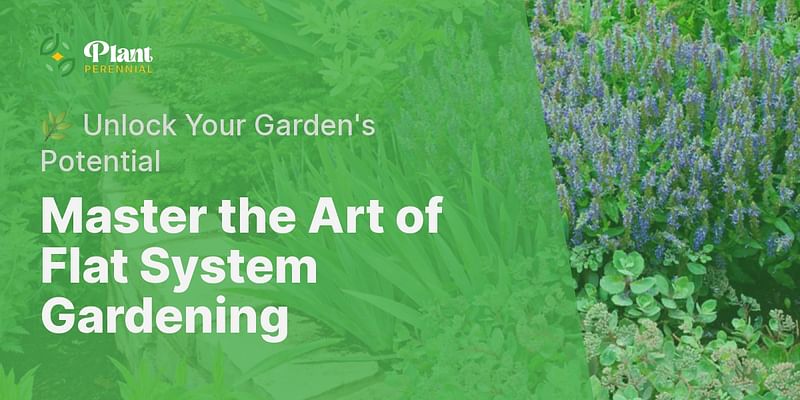Bethany Gislason is an avid gardener who has spent over a decade nurturing perennials. Her passion for gardening has led her to explore new plants and sustainable techniques, resulting in picturesque and enduring gardens. Away from her garden, Bethany is a hiking enthusiast and an ardent reader.
Of course! Gardening and landscape design in a flat system can be a wonderful way to create a beautiful and functional outdoor space. Whether you have a small backyard or a larger front yard, there are plenty of tips and ideas to help you make the most of your flat landscape. Here are some tips to get you started:
1. Assess your space: Before you begin, take a good look at your flat landscape and consider its unique characteristics. Take note of the amount of sunlight it receives, the soil type, and any existing features or structures that you want to work around.
2. Plan your layout: Start by sketching out a rough plan for your garden. Consider the different areas you want to create, such as a seating area, flower beds, or a vegetable garden. Think about how you want to move through the space and how different elements will interact with each other.
3. Choose the right plants: When selecting plants for a flat system garden, it's important to choose varieties that will thrive in your specific conditions. Consider factors such as sunlight requirements, soil moisture levels, and the overall aesthetic you want to achieve. Some popular choices for flat gardens include daylilies, hostas, and ornamental grasses.
4. Create layers: To add depth and interest to your flat landscape, incorporate plants of varying heights and textures. Use taller plants as a backdrop, mid-sized plants as fillers, and low-growing plants as ground cover. This layering technique will help create a visually appealing and dynamic garden.
5. Incorporate hardscaping elements: In addition to plants, consider incorporating hardscaping elements such as pathways, patios, or retaining walls. These features can help define different areas of your garden and add structure to the overall design.
6. Consider focal points: Focal points are key elements that draw the eye and create visual interest. They can be anything from a striking plant or sculpture to a water feature or seating area. By incorporating focal points strategically throughout your flat system garden, you can create a sense of balance and harmony.
7. Pay attention to maintenance: When designing your flat system garden, consider the level of maintenance you're willing to commit to. If you prefer a low-maintenance garden, choose plants that require minimal care and opt for durable materials for your hardscaping elements.
8. Add color and texture: To create a visually stunning garden, play with color and texture. Choose plants with different bloom times to ensure a continuous display of flowers throughout the growing season. Additionally, mix plants with varying leaf shapes and textures to add visual interest even when they're not in bloom.
Remember, gardening and landscape design is a creative process, so don't be afraid to experiment and make adjustments as you go. With these tips in mind, you'll be well on your way to creating a beautiful and thriving flat system garden. Happy gardening!














